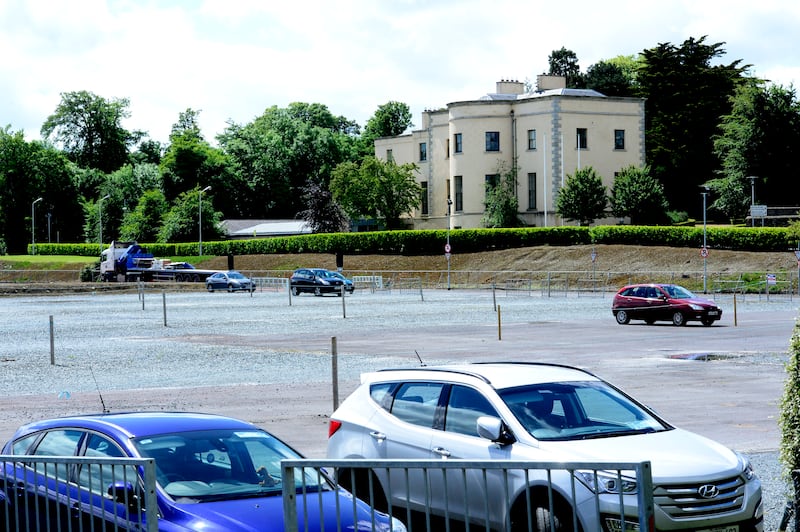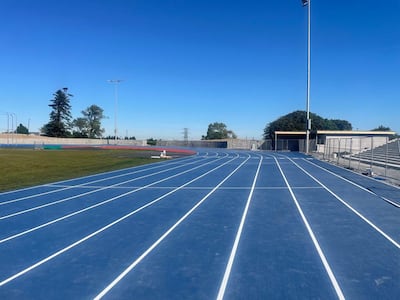Long before Dundrum made its name as a town centre it was the start of our escape and getaway to Belfield and I can still see him in my mind running up that hill half a stride ahead of me.
We sometimes carried our spikes, one in each hand, because in our house nothing marked the end of the track season like the hopes and dreams of the next one and filling that unforgiving minute with 60 seconds worth of a distance run. And, which is more, you’ll be a man, my son.
For father and son it had always been there since its fabled construction on the once properly green Belfield belt of University College Dublin — originally laid there as a grass arena, sometime in the 1960s, then fantastically modernised in 1977, the first tartan running track in the Republic and made to last.
Throughout that time it was the only running track in the entire area of south county Dublin, and we were blessed to have it within easy reach, which it always was, a mile-and-a-half run from our front doorstep, somehow always shorter on the way back.
Have your say: Who is the greatest Irish sports star of them all?
Michael Watson and the incredible relationship he shares with the man who saved his life
How a sports psychologist helped Rory McIlroy live with the raging doubts and secure career Grand Slam
Shane Lowry set for quick return to action following Masters disappointment
Over that time it did become patchy in parts, only that never mattered. It was our world record track, where in 1985 Eamonn Coghlan, Marcus O’Sullivan, Frank O’Mara and Ray Flynn ran a mile each in immediate succession and clocked 15:49.08, a world record which still stands. For the best part of two decades it served as one of the most vital components in the development of Irish athletes and I know that because I was one of them.

It also served as the home track for our club, Dundrum South Dublin, for all its growth and popularity during that same period never finding a home track of its own, or indeed a clubhouse for that matter beyond the old oak tree just inside the main gate of Marlay Park.
Which is why when, nearly 11 years ago already, the running track at Belfield was first deemed unsafe and in need of urgent repair and then ripped up in parts to serve as a car park the loss felt immense, and not just for those of us who could run there and back. For years after it sat there in its own shallow grave, the lack of funding was cited for its neglect even while the rest of UCD was being built up around it.
It’s also almost five years now since an anonymous donation of €3 million was given to UCD, in January 2018, for the sole purpose of building a new track and then maintaining it for the next 20 years. The site of 3.73 hectares was located at the Clonskeagh end of the campus and things slowly pressed ahead before Covid-19 got in the way, only now the finish line has been reached.
Next Friday, the substantial completion certificate will be signed off, the new track lined and ready for the returning students and breathing even more life back into UCD Athletics Club. The track was laid on a double-rubber foundation, more suitable for training and long-term use, finished off in blue to reflect the college colours and with full floodlighting too.
The Clonskeagh location also fits with the now sporting end of UCD, on that west side of the campus, where Leinster Rugby also have their training pitches, and next to the Olympic-size swimming pool. The absence of a running track had been a particularly sore point, however, with UCD having the largest student body in Ireland — some 32,000 people in all.

Meanwhile, just four miles or so up the road from Belfield, towards the foot of the Dublin mountains, Dundrum South Dublin are about ready to cross the finish line on their first running track — likewise finished in blue to reflect the club colours — and there’s a long story behind that one too.
It’s coming up on 10 years since the club paid €1.25 million for the St Thomas estate of 15 acres, just off the Tibradden Road and the back entrance to Marlay, incidentally the former home of the late Irish Times chairman and chief executive, Major Tom McDowell. It was a good price even at the bottom of the property market and now the eight-acre meadow to the rear of the house has been transformed into a beautifully landscaped running arena, the blue track in this case the Mondo surface known for its more competitive streak.
In 2019 the club got the endorsement of Dún Laoghaire Rathdown County Council in applying for the Government’s new Large Scale Sport Infrastructure Fund (LSSIF), the eventual end product being a multisport facility open to all clubs in the area with Dundrum South Dublin the anchor tenant. The completion of phase one includes a perimeter trail of around 2km, with full floodlighting too, perfect for warming up and cooling and no need to carry the spikes in each hand either.
It’s so far costing about €5.2 million, and the club has put up much of that from its own reserves from 40 years of running the Women’s Mini Marathon before that LSSIF funding is drawn down. They’ve been careful too to ensure it is not a vanity project but a running track and training facility open to anyone who wants or needs to make use of it. No dogs and no ball games are allowed because the emphasis here is on track and field.
The new facility will also afford Dundrum South Dublin the chance to double its current membership of about 650 within the next year, and more immediately perhaps ease the waiting list of some 200 mostly juvenile athletes. They’ve been based or trained out of seven different locations over the years, including the near inner-city suburb facility at Irishtown, only now they have a home to call their own.
Stillorgan-Rathfarnham Rugby Club, by the way, is also ready to open their new training pitches right next door, also their first place to call home, and if easy access might be a minor issue for some the setting certainly makes up for it.
Coming as both these new blue running tracks do on the back of the most successful ever European Championships for Irish athletics, the hopes and dreams of the next generation can only be in a better place, an older generation perhaps thinking of digging out their spikes and filling the unforgiving minute one more time too.

















